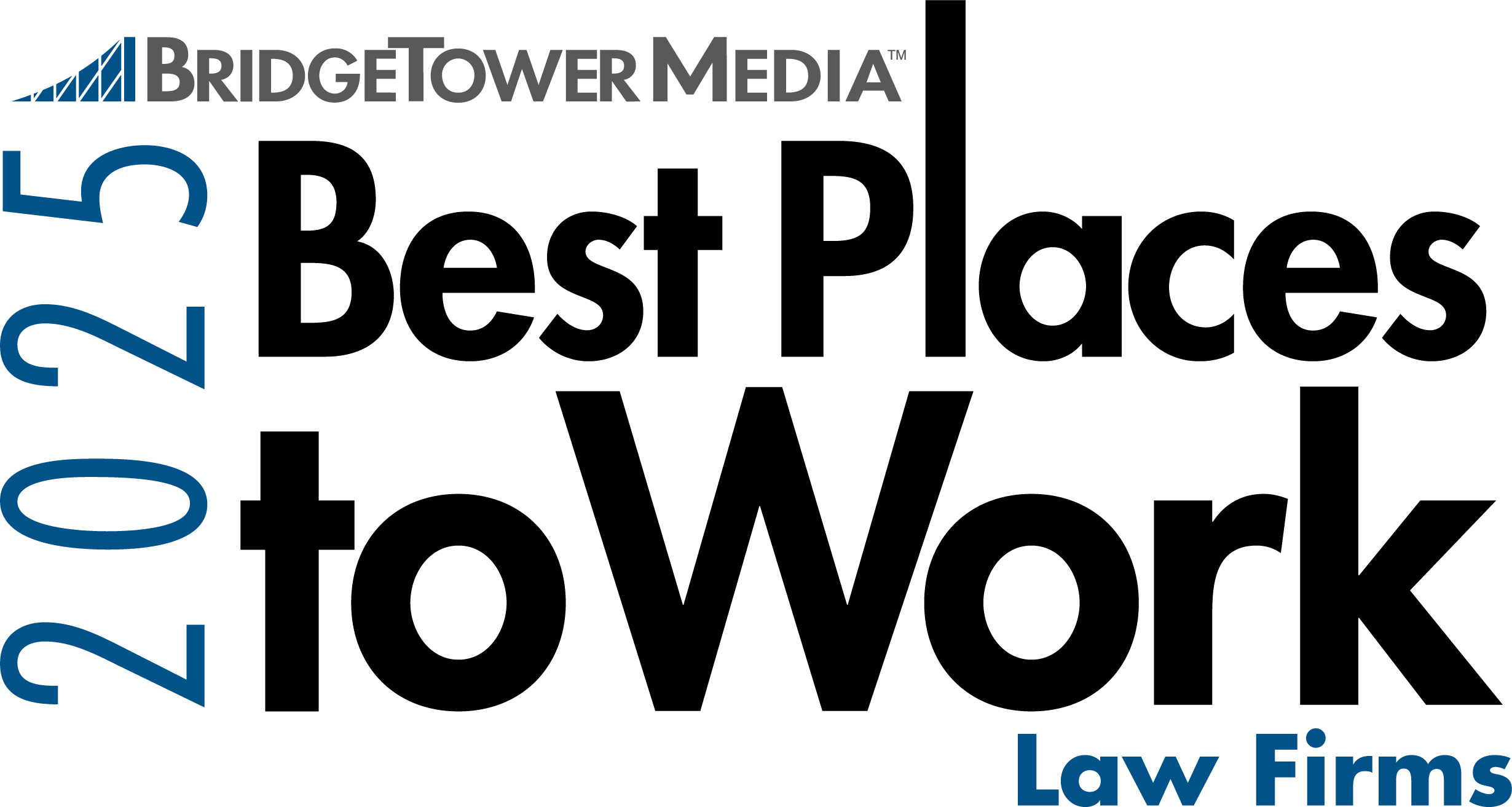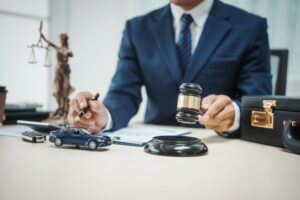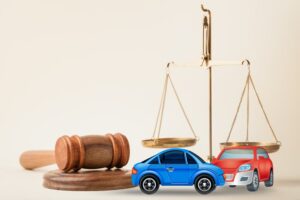Car accidents typically happen when drivers commit traffic law violations, such as speeding, failing to yield the right-of-way, or engaging in distracted driving. If you sustained injuries in one of these collisions, you may be eligible to file a claim with the responsible driver’s insurance company. However, insurance companies are notoriously difficult in car accident claims and will do everything possible to limit your compensation. For example, the insurance company may claim that you caused or contributed to the accident or you are overstating your injuries.
In this situation, a skilled car accident lawyer can be extremely helpful. Your attorney can highlight the strengths of your case, downplay any weaknesses, and aggressively negotiate for the compensation you deserve. If the insurance company refuses to put a reasonable settlement offer on the table, your lawyer can threaten litigation and, if necessary, take your case to trial or binding arbitration.
How Do Other Drivers Frequently Cause Car Accidents and Injuries Due to Negligence?
Car accidents are a leading cause of injuries and fatalities on the roads, often resulting from the negligence of other motorists. Negligent driving behaviors can be broadly categorized into a few key types, each contributing significantly to the risk of accidents and injuries.
One of the most common negligent behaviors is distracted driving. This occurs when drivers divert their attention from the road, often to use their phones, eat, or engage in other activities. Texting while driving is particularly dangerous because it combines visual, manual, and cognitive distractions.
Another major factor is speeding. When drivers exceed the speed limit, they have less time to react to sudden changes in traffic conditions, and the force of impact in a crash is much greater. Speeding not only endangers the driver but also everyone else on the road. It is a form of aggressive driving that significantly increases the likelihood of severe accidents and injuries.
Impaired driving is also a critical issue. Alcohol and drugs impair a driver’s ability to make sound judgments, react quickly, and maintain control of the vehicle. Despite numerous public awareness campaigns, driving under the influence remains a leading cause of traffic accidents.
In addition, failure to obey traffic signals and signs can lead to dangerous situations. Running red lights, ignoring stop signs, and failing to yield the right-of-way can cause high-speed collisions at intersections, which are often the deadliest.
Tailgating or following another vehicle too closely is another form of negligent driving. It reduces the reaction time available to avoid a collision if the car in front stops suddenly. This aggressive behavior often results in rear-end collisions, which can cause significant injuries – particularly whiplash.
How Do Insurance Companies Wrongfully Blame Car Accident Victims for Their Accidents and Injuries?
Insurance companies are in the business of making money, which sometimes means they try to minimize the amount they pay out in claims. One way they do this is by wrongfully blaming car accident victims for their accidents and injuries. There are several tactics insurance companies use to shift the blame and reduce their financial liability.
First, insurance companies may argue that the victim was partially or wholly at fault for the accident. This is known as contributory or comparative negligence. For example, if a driver was slightly over the speed limit or failed to signal a turn, the insurance company may claim that these actions contributed to the accident. Even if the other driver was primarily at fault, the insurance company can reduce the compensation based on the victim’s alleged contribution to the accident.
Second, insurance companies often question the severity of the victim’s injuries. They may argue that the injuries were pre existing or not as severe as claimed. To support this, they can hire doctors to review medical records and provide opinions that downplay the injuries. They can also argue that the injuries are unrelated to the accident, suggesting they occurred before or after the incident.
Another common tactic is disputing the necessity and cost of medical treatment. Insurance companies may claim that the medical treatments were excessive or unnecessary. They may also argue that the victim did not seek medical attention promptly enough after the accident, implying that the delay indicates the injuries were not serious.
Insurance companies also scrutinize the victim’s behavior immediately following the accident. They may argue that the victim did not act responsibly, such as failing to report the accident to the police or not gathering sufficient evidence at the scene. They can claim that this lack of action indicates the victim’s negligence or lack of injury.
Furthermore, insurance companies sometimes exploit statements the victim made. Adjusters may take recorded statements shortly after the accident, hoping the victim will make inconsistent or unclear statements that they can use against them. They may also misinterpret or take statements out of context to shift the blame.
Finally, social media can be a tool for insurance companies to challenge a victim’s claim. They may monitor the victim’s online activity for posts or photos that contradict the severity of their injuries. For example, if a victim claims serious back pain but posts pictures of themselves engaging in physical activities, the insurance company can use this as evidence to dispute the claim.
Car accident victims need to be aware of these tactics and seek legal advice to protect their rights.
How Can an Experienced Car Accident Attorney Fight the Insurance Company on Your Behalf?
An experienced car accident attorney can be a crucial ally in fighting the insurance company and negotiating a fair settlement. Insurance companies often focus on minimizing payouts, but a skilled lawyer can help level the playing field and ensure victims receive the compensation they deserve.
First, a car accident attorney knows the law. They understand the “ins and outs” of personal injury and insurance laws and can apply this knowledge to build a strong case. They can identify all liable parties, whether it is another driver, a vehicle manufacturer, or even a government entity responsible for road maintenance. By determining liability accurately, an attorney can maximize the potential compensation.
Gathering and presenting evidence is another area where a lawyer excels. They can collect police reports, medical records, witness statements, and accident scene photos. They may also work with accident reconstruction experts to provide a detailed analysis of how the accident occurred. This thorough compilation of evidence can effectively counter the insurance company’s attempts to blame the victim or downplay the severity of injuries.
Negotiation skills are a key asset of an experienced lawyer. Insurance adjusters are trained to settle claims for as little money as possible. An attorney knows how to negotiate effectively, presenting a well-documented claim highlighting the full extent of the victim’s damages. This includes medical expenses, property damage, lost income, pain and suffering, and future medical needs. An attorney can push back against lowball offers and argue for a fair settlement.
In addition, an attorney can protect the victim from making mistakes that can harm their case. Insurance companies often try to get victims to make recorded statements or sign documents that can be used against them later. An attorney can handle all communication with the insurance company, ensuring that the victim says or does nothing that can jeopardize the claim.
If negotiations fail, an experienced attorney is prepared to take the case to court. They can file a lawsuit and represent the victim in trial, presenting a compelling case to a judge or jury. The threat of litigation often motivates insurance companies to offer a fair settlement rather than risk a court verdict.
An experienced car accident lawyer’s goal is to ensure that you receive the compensation you deserve for your accident-related losses.
What Happens During a Car Accident Trial, and When Is a Trial Necessary?
A car accident trial is a formal legal process that occurs when the parties involved in an accident cannot agree on a settlement. This trial takes place in a courtroom before a judge and possibly a jury, and it involves presenting evidence and arguments to determine who is at fault and what compensation is owed.
If a jury trial has been requested, the trial begins with jury selection. During this process, both the injured victim’s (plaintiff’s) and the at-fault party’s (defendant’s) attorneys question potential jurors to ensure they are unbiased and capable of delivering a fair verdict. Once the jury is in place, the trial moves to the opening statements.
In the opening statements, each attorney provides an overview of their case. The plaintiff’s lawyer goes first, outlining the evidence that they will present to prove the defendant’s negligence and the resulting damages. The defendant’s lawyer then provides their perspective, explaining how they plan to refute the plaintiff’s claims.
After the opening statements, the plaintiff’s attorney presents their case-in-chief. This involves calling witnesses, such as accident reconstruction experts, medical professionals, and eyewitnesses, to testify about the accident and injuries. The attorney also presents physical evidence, such as photographs, medical records, and police reports. The defense attorney has the opportunity to cross-examine each witness to challenge their testimony and credibility.
Once the attorney for the plaintiff presents their case, the defense attorney begins their case-in-chief. They call their own witnesses and present evidence to dispute the plaintiff’s claims. The plaintiff’s attorney can cross-examine these witnesses as well.
After both sides have presented their cases, closing arguments take place. Each attorney summarizes the evidence and tries to persuade the jury or judge to rule in their favor. The plaintiff’s attorney goes first, followed by the defense attorney, and then the plaintiff’s attorney may offer a rebuttal.
The jury or judge then deliberates to reach a verdict. They consider the evidence and testimony to decide who is at fault and, if they find the defendant liable, the amount of compensation they will award.
A trial is necessary when the parties involved in the accident cannot reach a fair settlement through negotiation or mediation. This often happens when there are disputes about who is at fault, the extent of injuries, or the amount of compensation deserved. A trial provides a structured setting for both sides to present their case and for a neutral party to make a final, legally binding decision.
Proving the Elements of a Car Accident Case and Recovering Compensation
In a car accident case, proving liability and securing compensation requires meeting certain legal elements. These elements establish the framework for showing that another party is responsible for the accident and resulting damages. There are four key elements you need to prove: duty, breach, causation, and damages.
- Duty — First, you must demonstrate that the defendant owed you a duty of care. All drivers have a legal obligation to drive safely and follow traffic laws to protect others on the road. This duty includes obeying speed limits, signaling turns, stopping at red lights, and driving sober.
- Breach of Duty — Second, you must show that the defendant breached this duty of care. A breach occurs when the driver fails to act in a reasonably prudent manner. For example, if the driver was texting, speeding, or running a red light, they breached their duty to drive safely.
- Causation — Third, you need to establish causation. This means proving that the defendant’s breach of duty directly caused the accident and your injuries. There are two types of causation: actual cause and proximate cause. Actual cause, or cause-in-fact, means that the accident would not have occurred “but for” the defendant’s actions. Proximate cause means that the defendant’s actions were closely enough related to your injuries to hold them legally responsible.
- Damages — Finally, you must prove that you suffered damages as a result of the accident. Damages can be physical, emotional, or financial. This element involves providing evidence of your injuries, medical expenses, lost income, pain and suffering, and any other losses you incurred due to the accident.
Once you have proven these elements, you can seek various types of compensation, also known as damages. These can be categorized into economic and non-economic damages.
- Economic Damages — Economic damages cover tangible financial losses. These include medical expenses, such as hospital bills, surgery costs, physical therapy, and future medical care. They also include lost income for the time you were unable to work due to your injuries, as well as any reduction in your earning capacity if you are unable to return to work or must take a lower-paying job.
- Non-economic Damages — Non-economic damages compensate for intangible losses. These include pain and suffering, which covers the physical pain and emotional distress the accident caused. You can also recover for loss of enjoyment of life if your injuries prevent you from engaging in activities you once enjoyed, and for loss of consortium, which compensates for the effect of the accident on your relationship with your spouse or family.
Talk with a Skilled Car Accident Lawyer in Your Area Today
If you recently sustained injuries in a car crash, you should always have a well know Cape Girardeau personal injury law firm advocating for you as soon as possible. Your lawyer can handle every step of the claims-filing and settlement-negotiation processes for you and will aggressively fight the insurance company for the compensation you deserve. If the insurance company refuses to make you a fair settlement offer, your lawyer can take your case to trial or pursue another litigation option in court.






